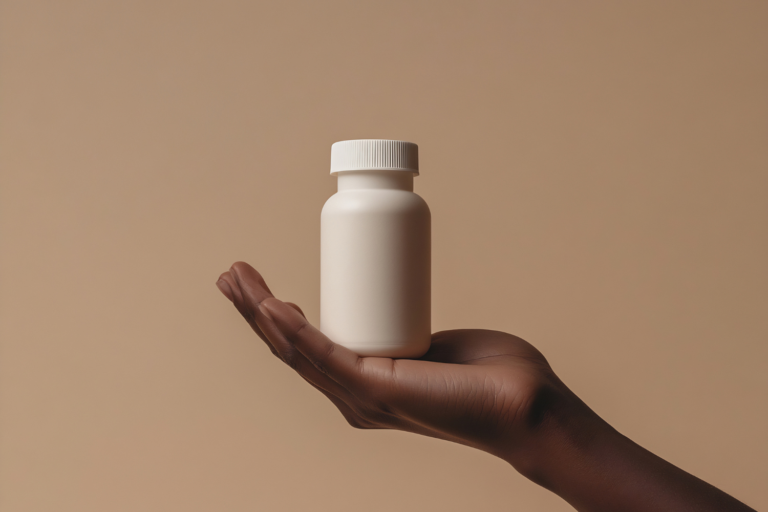How do you know if your supplement manufacturer is still meeting your standards six months, or even six weeks, after signing the contract? Once the agreement is in place, it’s easy to assume everything will continue to run smoothly. But in reality, what happens after the paperwork is signed often carries more risk than expected. That’s why supplement manufacturer audits and key performance indicators (KPIs) need to be part of your ongoing process.
Without consistent oversight, the quality of dietary supplements can decline, regulatory compliance may be missed, and delays in the supply chain can quietly reduce consumer trust. Even one labeling error or dip in quality can have a lasting impact on your brand’s reputation. This article outlines how to monitor your manufacturer’s performance through regular audits, clear metrics, and structured quality checks, helping you maintain compliance, deliver safe products, and strengthen your position in the marketplace.
Establishing a Post-Contract Monitoring Framework
Once the contract is signed, your real work begins. A strong monitoring program helps ensure your dietary supplements continue to meet industry standards and deliver quality products that support consumer trust.
Maintaining supplier alignment requires more than a handshake. Without a structured program in place, even small lapses in quality or good manufacturing practices (GMP) can lead to production issues, delayed services, or non-compliance—all of which put your brand at risk.
Setting Clear Expectations
Clear expectations should be written into the agreement from the start. Include performance standards, timelines, and GMP adherence requirements. This creates a shared understanding and provides a reference point when it’s time to review performance or address problems.
Set measurable benchmarks that allow you to verify outcomes, such as acceptable defect rates, quality control procedures, and raw material sourcing protocols. Defining these details early helps prevent confusion, strengthens your commitment to safety, and makes future audits more effective.
Communication Protocols
Strong communication is essential to completing projects on time and maintaining operational consistency. Establish a reliable reporting structure with regular check-ins, production updates, and audit summaries. These touchpoints allow both sides to stay aligned and uncover small issues before they become costly problems.
Encourage transparency around production delays, labeling changes, or packaging issues. Keeping the flow of information clear and consistent reinforces your commitment to high standards and helps protect the value of your program across supply chains.

Conducting Effective Supplement Manufacturer Audits
Supplement manufacturer audits are a top priority for brands that want to ensure ongoing compliance, consistent quality, and safe products. Each audit offers a structured opportunity to evaluate manufacturing processes, verify documentation, and confirm that the manufacturer’s practices meet both regulatory standards and your business expectations.
A well-run audit protects your product quality and supports the trust you’ve built with your customers.
Types of Audits
Internal audits let your team assess how closely the manufacturer is following the procedures outlined in your agreement. These checks often reveal early signs of non-compliance or operational issues before they impact consumers.
Third-party audits provide added objectivity. These external evaluations typically focus on adherence to current good manufacturing practices (cGMP), giving you a clear view of how your manufacturer compares with broader industry standards.
Audit Checklist Essentials
Each audit should follow a complete and structured checklist that covers key areas of risk and compliance. These include:
- Standard Operating Procedures (SOPs): Confirm procedures are up to date and actively followed.
- Facilities: Inspect for cleanliness, organization, and compliance with safety and GMP requirements.
- Quality Control: Review how quality results are recorded, reviewed, and used to inform decisions.
- Raw Materials: Verify sourcing and traceability by testing raw materials for purity and safety.
- Training Records: Ensure employees are properly trained and qualified to perform their roles.
- Product Labeling: Review how supplement labels are prepared, verified, and aligned with regulatory standards.
Following this checklist helps reduce risk and supports compliance with dietary supplement regulations. It also strengthens your brand’s reputation by demonstrating a clear commitment to safety and transparency.
Frequency of Audits
How often you conduct audits should reflect the complexity of your dietary supplement, the manufacturer’s history, and your compliance needs. High-volume or multi-product manufacturers often benefit from more frequent evaluations.
At a minimum, schedule a full audit once or twice per year. Between those audits, run smaller check-ins to verify procedures, review updated documentation, and prepare for any required adjustments to your compliance program. The benefit of this ongoing approach is clear. It keeps operations on track, catches issues early, and protects your brand’s long-term success.

Key Performance Indicators (KPIs) for Manufacturer Monitoring
Tracking KPIs helps you move from guesswork to data-driven decisions. With the right metrics in place, you can quickly spot trends that signal performance issues or improvements.
Strong KPIs reflect real outcomes from product quality to delivery reliability. Each one should tie back to your goals for customer satisfaction, safety, and long-term growth in the wellness marketplace.
Quality Metrics
- Defect Rate: Track how many units fail to meet your quality requirements. High numbers suggest weak quality control or problems with raw materials.
- First Pass Yield: Monitor how many dietary supplement products pass inspection the first time. A low score often signals deeper issues in manufacturing processes.
Delivery Metrics
- On-Time Delivery Rate: Know how often your manufacturer delivers within the expected window. This affects your supply chain and customer experience.
- Lead Time: Track the full time from order to delivery. Consistently long lead times can hurt your ability to launch or restock products on schedule.
Compliance Metrics
- Audit Findings: Measure how many issues are uncovered during each audit. Repeat problems show that the manufacturer may not be meeting your expectations or industry standards.
- Regulatory Compliance Rate: This reflects how well your partner aligns with GMP and other dietary supplement regulations.
Communication Metrics
- Response Time: Time taken to reply to questions or concerns.
- Issue Resolution Time: Time required to fix a problem once it’s been raised. Long delays here can affect your operations, services, and consumer trust.

Leveraging Technology for Performance Monitoring
Manual tracking can only take you so far. Technology helps streamline how you monitor performance, share data, and respond to issues, especially when working with multiple suppliers or products.
Digital tools give you a clearer view of what’s happening behind the scenes and help you manage risks with greater precision.
Supplier Management Software
A good software platform allows you to schedule supplement manufacturer audits, review performance data, and store documentation in one place. It supports real-time decision-making and makes it easier to maintain complete records for compliance purposes.
Look for programs that integrate with your existing systems and can adapt as your production volume grows. The right tech not only helps you meet regulatory standards, it enhances the value you bring to your customers.
Real-Time Data Sharing
Real-time data gives you immediate insight into how well your manufacturer is performing. This might include batch test results, production timelines, or packaging errors.
Live updates allow you to verify quality at every step and quickly adjust when problems arise. For fast-moving supply chains, this kind of transparency is crucial.

Addressing Performance Issues
Not every issue can be avoided, but fast, informed responses can prevent small problems from turning into bigger risks. Taking action based on real audit findings and KPI data keeps your products and your reputation secure.
Resolving problems starts with knowing where they come from and then acting quickly to correct them.
Identifying Root Causes
Look beyond surface-level symptoms. Use audit data, KPI trends, and supplier reports to identify patterns. Are late deliveries tied to raw material shortages? Is poor quality linked to gaps in employee training?
Once you isolate the cause, the next step is to apply targeted solutions that match the issue.
Implementing Corrective Actions
Work closely with your manufacturer to develop a plan. This might involve updating SOPs, improving testing of raw materials, or retraining staff.
Track progress and hold regular check-ins to ensure the corrective steps are completed. Your focus should be on restoring consistent quality and meeting all compliance benchmarks.
Reassessing the Partnership
If performance continues to slip, it may be time to explore other options. Repeated issues, ignored feedback, or failure to follow through on improvements can affect your operations and consumer trust.
Staying loyal to a partner should never come at the cost of your brand’s reputation. Sometimes the best way to enhance your value and protect customers is to seek a new manufacturing partner better suited to your business goals.

Staying Aligned with Your Supplement Manufacturer for the Long Run
Ongoing audits, KPI tracking, and strong supplier relationships play a key role in maintaining consistent quality, meeting regulatory compliance, and protecting your brand’s reputation in a competitive supplement marketplace. Monitoring your dietary supplement manufacturer goes beyond catching errors. It’s about creating a reliable system that supports safe production, open communication, and accountability across the supply chain.
Regular reviews of manufacturing processes, GMP adherence, and raw material sourcing help identify potential gaps before they affect your products or customers. When you take a proactive approach to performance monitoring, you not only reduce risk but also strengthen your foundation for long-term success.
Frequently Asked Questions
What are the most critical KPIs to track for supplement manufacturers?
Key KPIs include defect rate, first pass yield, on-time delivery, regulatory compliance rate, and issue resolution time.
How often should I conduct audits on my supplement manufacturer?
Most brands schedule audits at least once or twice a year, depending on production volume, complexity, and past performance.
What should be included in a supplement manufacturer audit checklist?
Include SOP reviews, facility inspections, raw material traceability, employee training, and quality control documentation.
How can technology aid in monitoring manufacturer performance?
Supplier management tools and real-time data sharing help track KPIs, streamline the audit process, and support ongoing compliance.
What steps should I take if my manufacturer consistently underperforms?
Start with a root cause analysis, apply corrective actions, and if issues persist, consider replacing the manufacturer to protect your brand.
References
- U.S. Food and Drug Administration. (n.d.). Facts about the current good manufacturing practice (CGMP). https://www.fda.gov/drugs/pharmaceutical-quality-resources/facts-about-current-good-manufacturing-practice-cgmp?_hsenc=p2ANqtz-_wTgMtFtJF4kYYDOPhT8Ax38FIGfL0LlnLicV-4mAemmVQLk0imQOROhBLPVuopltev0My
- U.S. Food and Drug Administration. (n.d.). Guidance documents & regulatory information by topic (food and dietary supplements). https://www.fda.gov/food/guidance-regulation-food-and-dietary-supplements/guidance-documents-regulatory-information-topic-food-and-dietary-supplements




